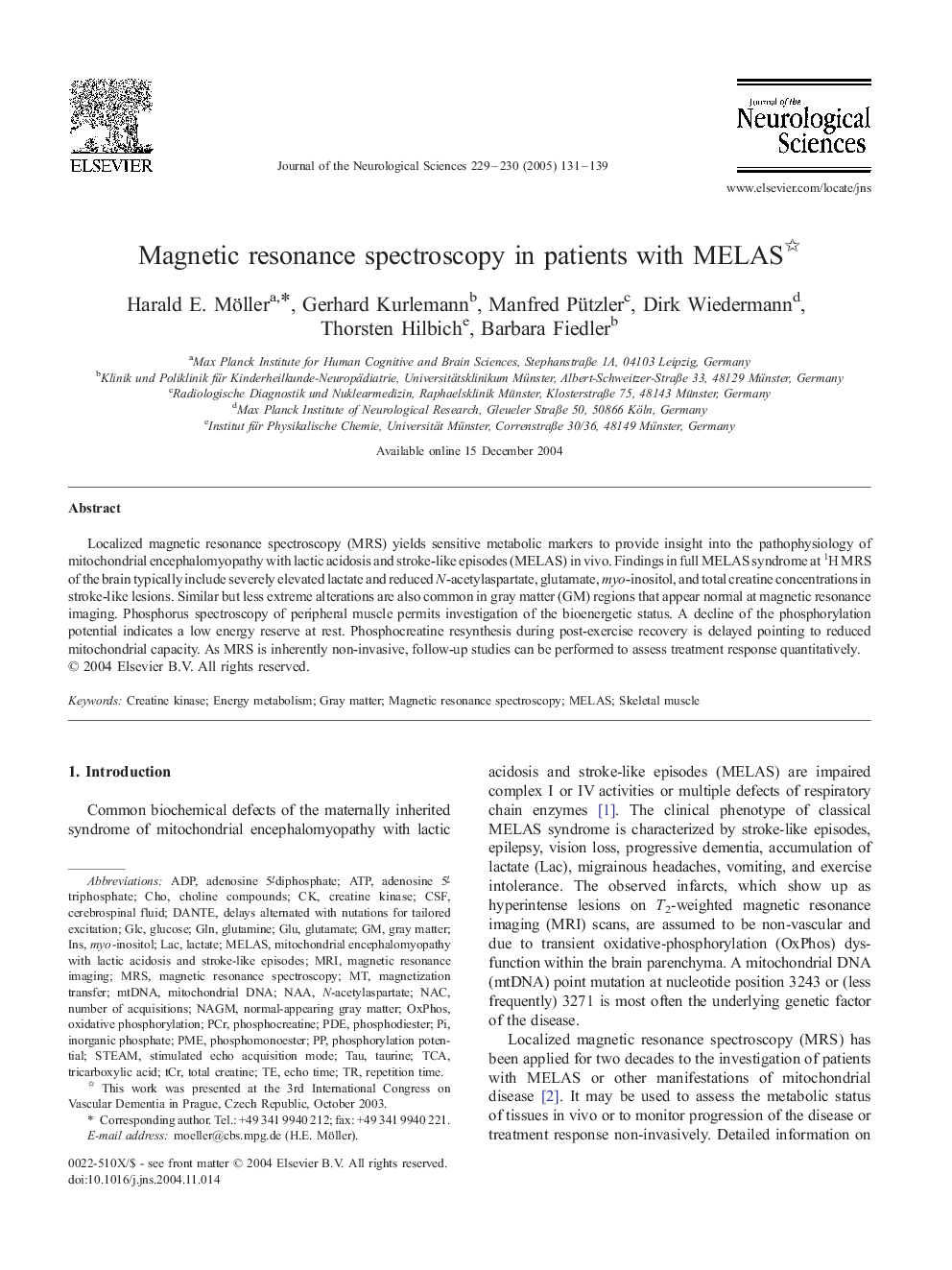| Article ID | Journal | Published Year | Pages | File Type |
|---|---|---|---|---|
| 9880405 | Journal of the Neurological Sciences | 2005 | 9 Pages |
Abstract
Localized magnetic resonance spectroscopy (MRS) yields sensitive metabolic markers to provide insight into the pathophysiology of mitochondrial encephalomyopathy with lactic acidosis and stroke-like episodes (MELAS) in vivo. Findings in full MELAS syndrome at 1H MRS of the brain typically include severely elevated lactate and reduced N-acetylaspartate, glutamate, myo-inositol, and total creatine concentrations in stroke-like lesions. Similar but less extreme alterations are also common in gray matter (GM) regions that appear normal at magnetic resonance imaging. Phosphorus spectroscopy of peripheral muscle permits investigation of the bioenergetic status. A decline of the phosphorylation potential indicates a low energy reserve at rest. Phosphocreatine resynthesis during post-exercise recovery is delayed pointing to reduced mitochondrial capacity. As MRS is inherently non-invasive, follow-up studies can be performed to assess treatment response quantitatively.
Keywords
Related Topics
Life Sciences
Biochemistry, Genetics and Molecular Biology
Ageing
Authors
Harald E. Möller, Gerhard Kurlemann, Manfred Pützler, Dirk Wiedermann, Thorsten Hilbich, Barbara Fiedler,
